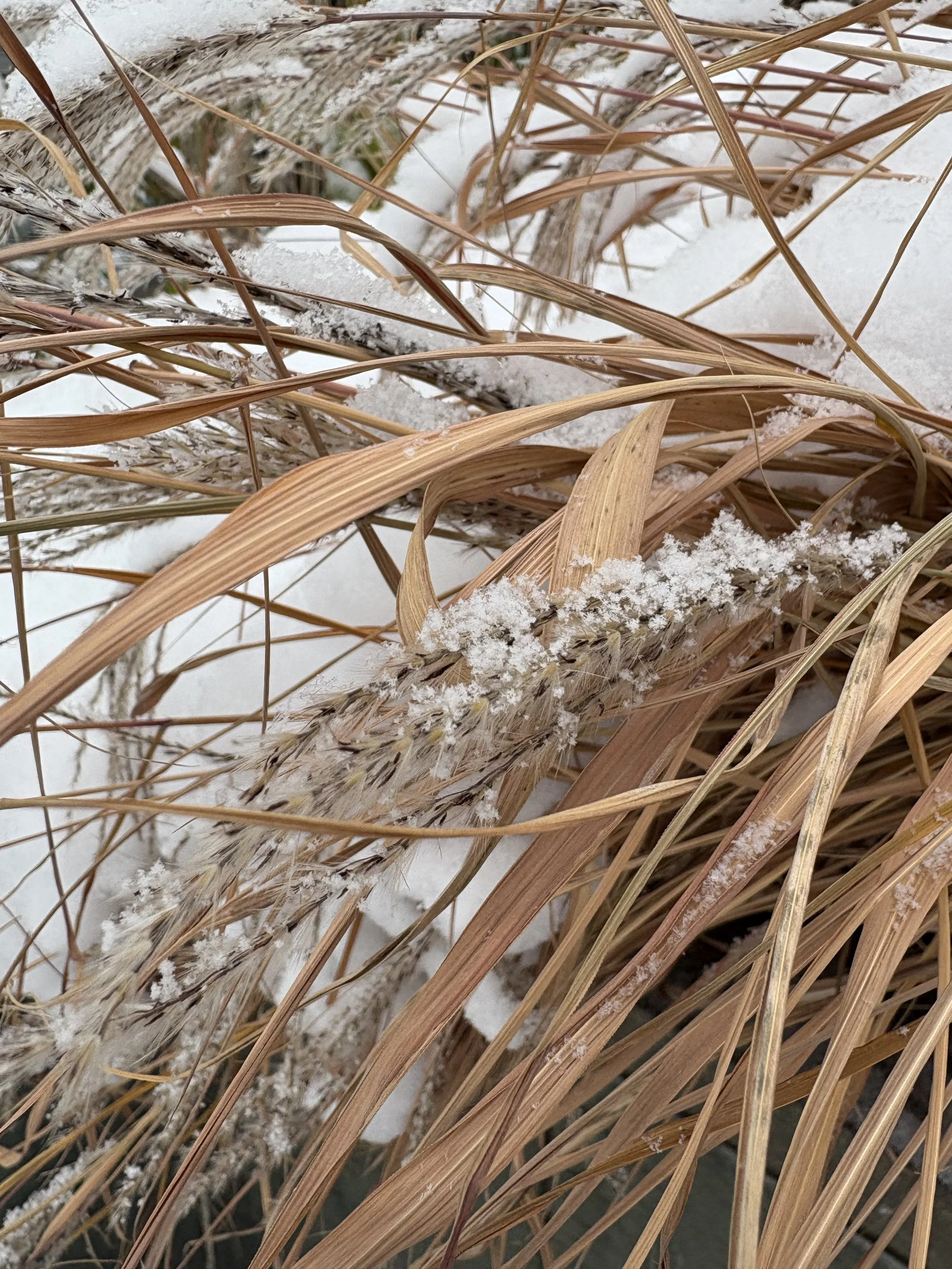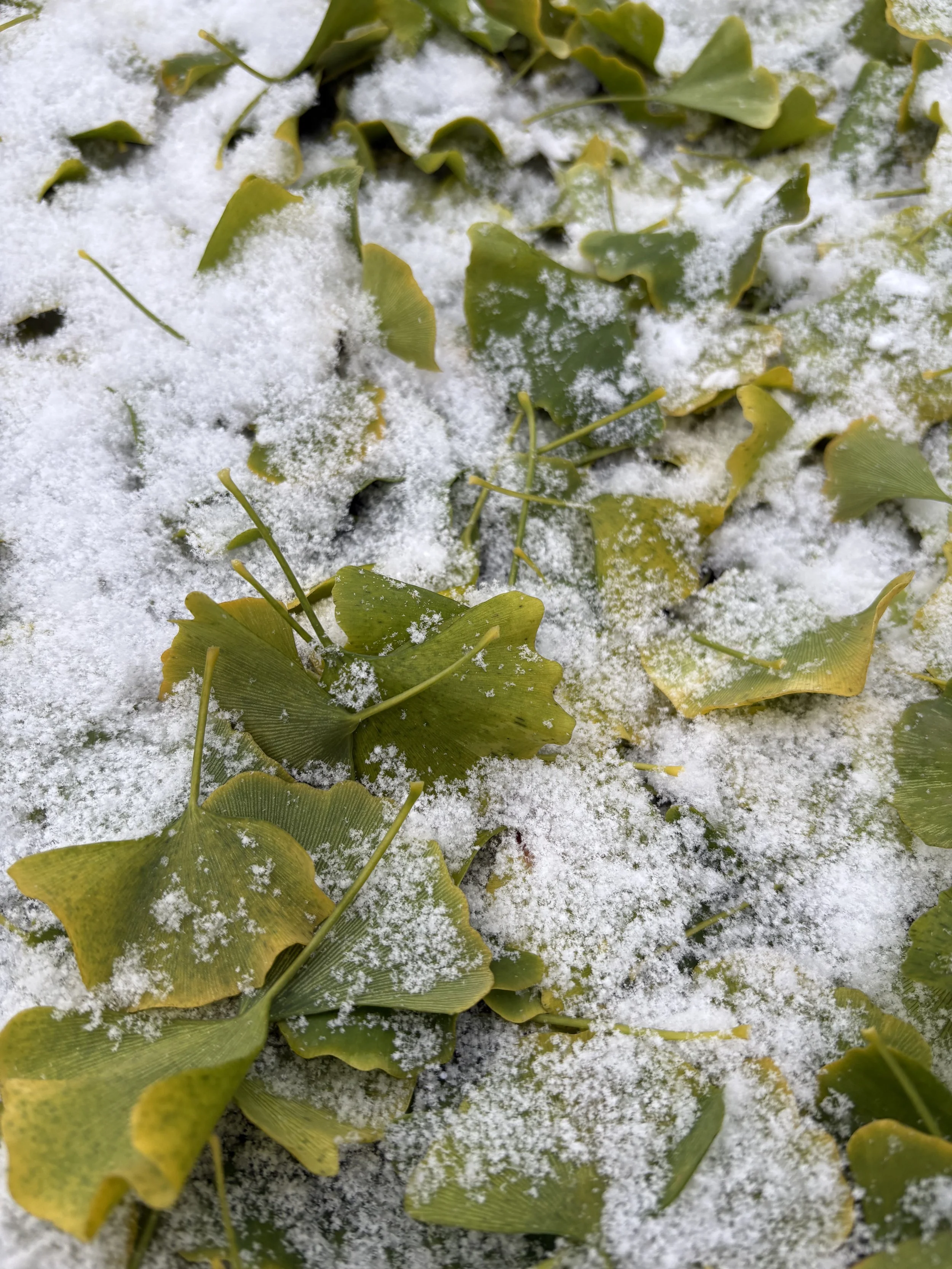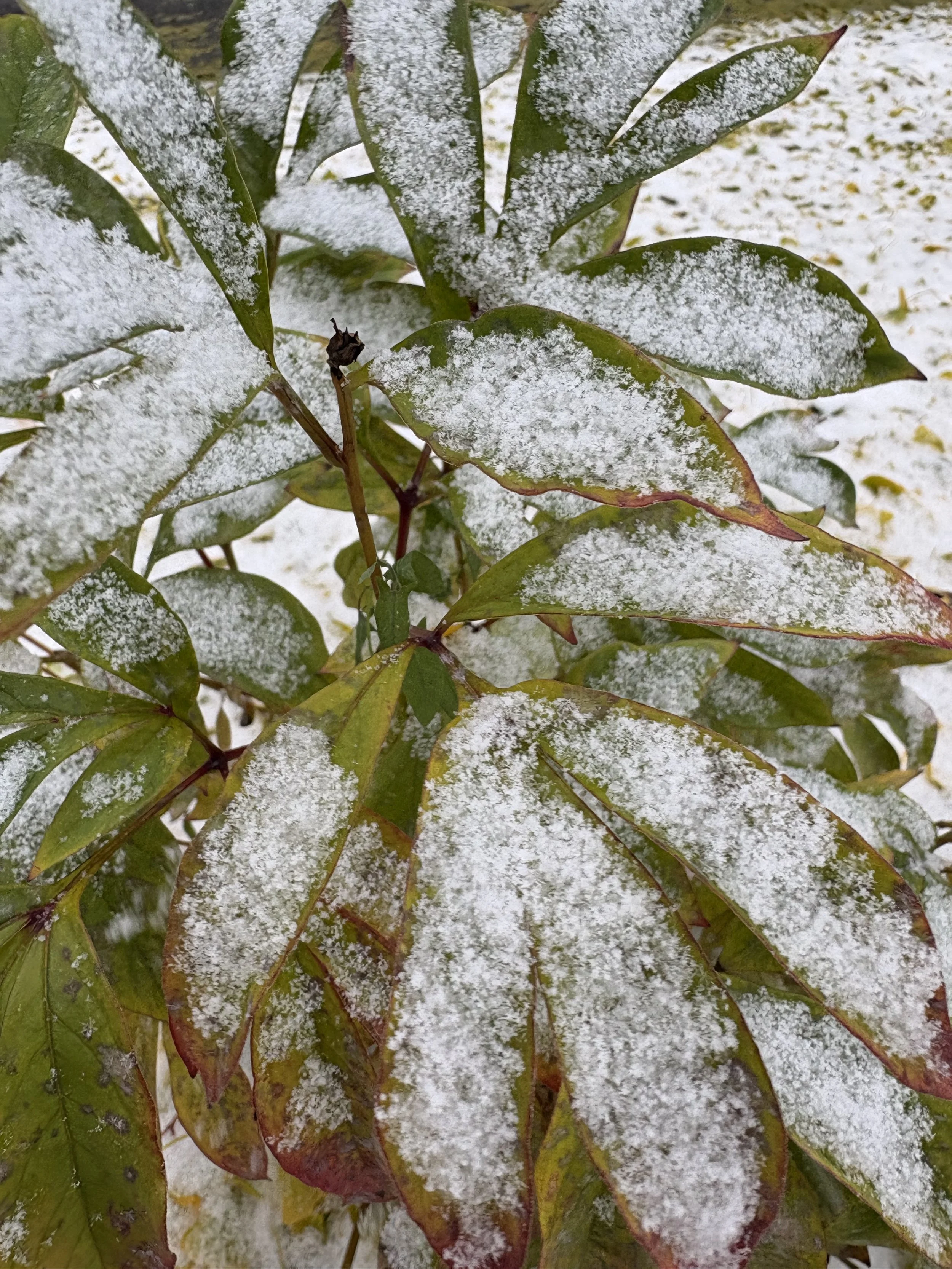The Gift of the First Snowfall
Hello gardeners!
The first snowfall is more than an Instagram worthy moment—it is a quiet turning point in the garden year. For plants, trees, and even the hidden soil life below, snow is not a burden but a blessing, especially as shoulder seasons grow more erratic due to climate change.
SNOW: Nature’s Winter Blanket
A layer of snow acts as a natural insulator, trapping air pockets that stabilize soil temperatures. Without the insulating cover, alternating freeze–thaw cycles can damage roots. Snow keeps the soil consistently cold once it arrives, reducing the stress of temperature fluctuations and preserving moisture levels throughout winter. Heavy frosts, without the protection of snow, especially in areas with heavy rainfalls leading up to a deep chill, can wreak havoc on plants. Few plants can tolerate, wet, frozen feet for any length of time without some damage.
The protection of snow extends to microorganisms as well. Beneath the snow, the soil stays active longer than you might think. Fungi, bacteria, and mycorrhizal networks have slowed down but vital processes such as breaking down organic matter, cycling nutrients, and supporting soil structure continue. This quiet biological activity will give plants a boost when the next growing season arrives.
Photo taken in Toronto, ON by R. Pak
Snow and the Tree Canopy
Trees also benefit from snow’s protective qualities. When a snowfall arrives gradually, the winter blanket is welcome. For the canopy, moderate snow loads encourage natural pruning and strengthen branch resilience. Heavy, wet snow on the other hand, can be very damaging to trees. Heavy wet snow and stronger winter winds can cause trees to fail. Those lovely Teddy Bear or Southern Comfort magnolia grandi flora seem particularly susceptible to large branches shearing off. Wind can be an aggressive gardener.
In forested or mature garden systems, the snow blanket can also create microclimates to buffer temperature swings. A continuous snowpack can protect fine roots, understory plants, and beneficial insects overwintering in leaf litter. These small effects accumulate, sustaining the health and diversity of the canopy over time.
Photo by: R. Pak
the timing of snow and Transition periods
The timing of that first snowfall plays a surprisingly big role in plant resilience. If it arrives after a steady sequence of frosts, plants have typically completed their dormancy transition. The plant structure has moved carbohydrates from the leaves to the roots, and cell structures have begun adjusting to cooling temperatures. But if snow falls too early, while plants are still metabolically active, tissues can be shocked by sudden cold, or by the weight of snow on partially hydrated stems and leaves.
In recent years, erratic autumn weather has made this shift less predictable. One of the things I am noticing is weather events in the shoulder period between seasons, seem to be doing more damage each year. For example, in British Columbia, we have heavier November rains, stronger winds and then sudden temperature drops. The combination of these climate stressors can be catastrophic for some plants and trees.
Photo: R. Pak
Learn to Observe: An Important Skill for Gardeners Building Climate Resilient Gardens
As eco-conscious gardeners the first snowfall invites us to observe nature. No action required. Watch how your garden receives the snow. There may be clues to frost pockets or warm spots against walls. Notice which plants remain upright, which bend, which seem to disappear entirely under the cover. This is where we find the clues to each species’ strategy for survival.
Resilient gardens are built on understanding, not control. Climate resilience begins when we stop trying to force the garden to behave and instead learn how it responds to environmental stressors like cold, wind, and ice. Snow gives us the opportunity to witness that relationship.
Rejoice when that first snowfall drifts down, but resist the urge to tidy or intervene. Let it arrive. Let it teach you. In the stillness of winter, your garden is learning how to endure—and you, as its caretaker, are learning how to listen.


